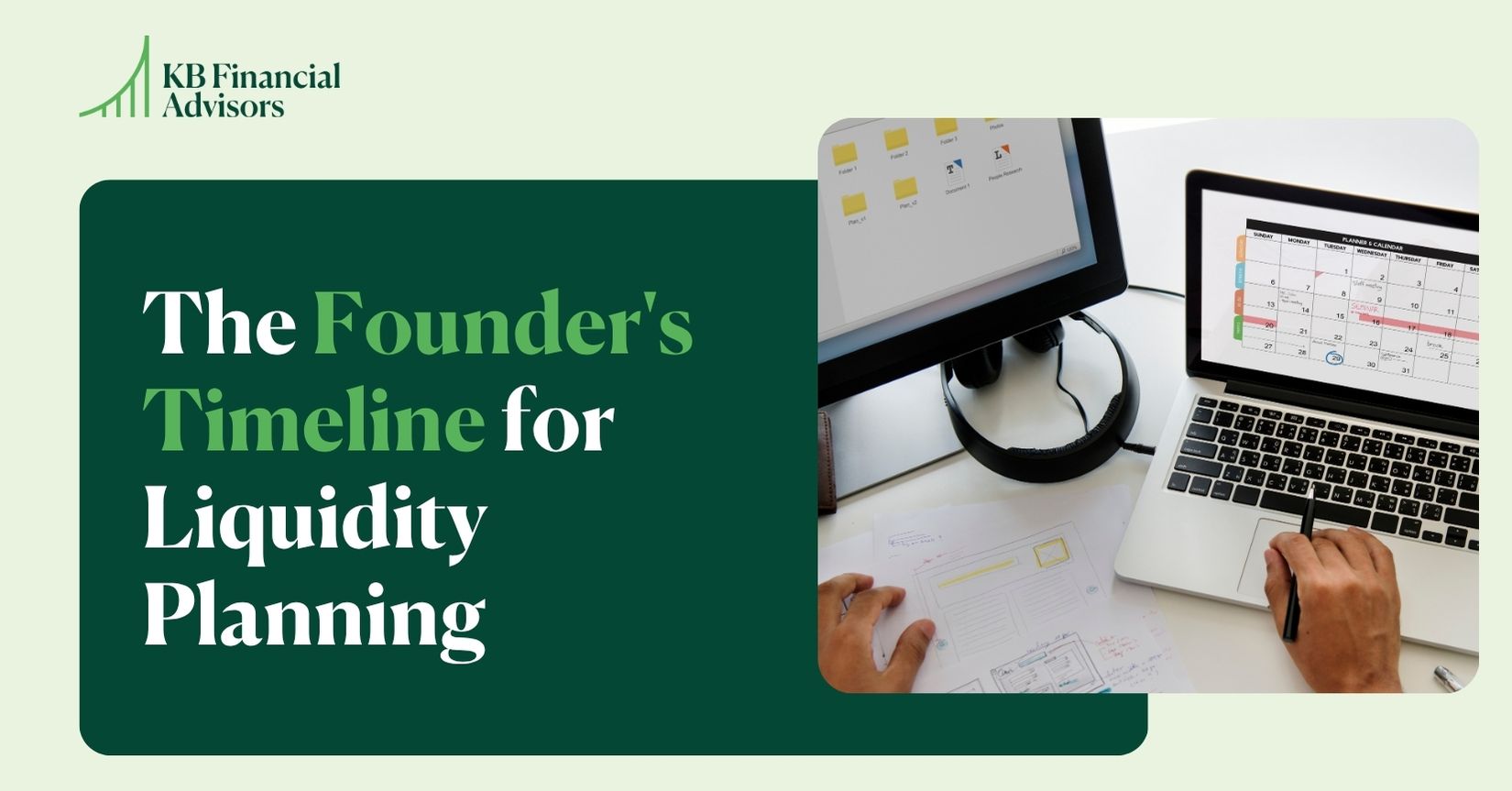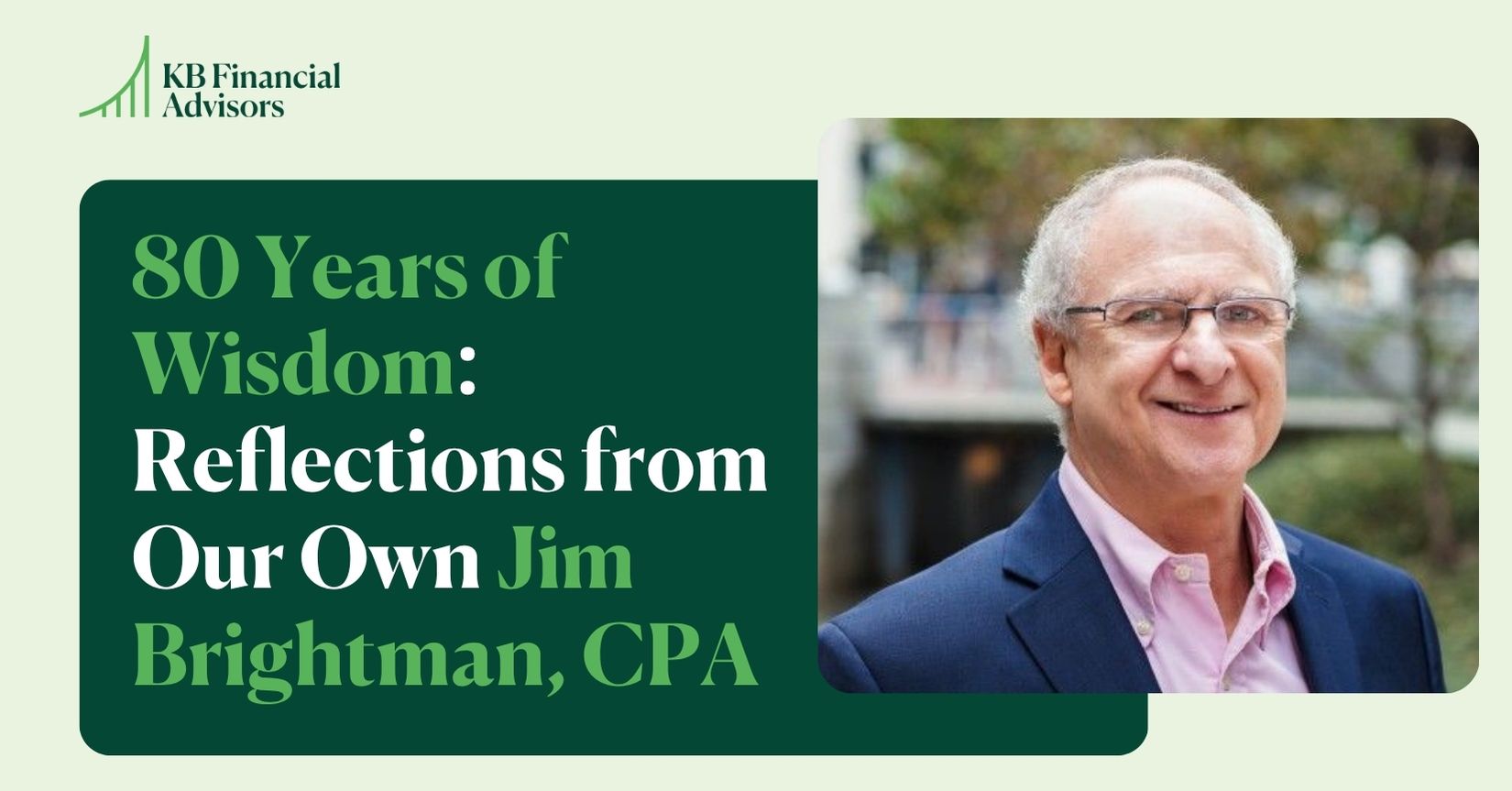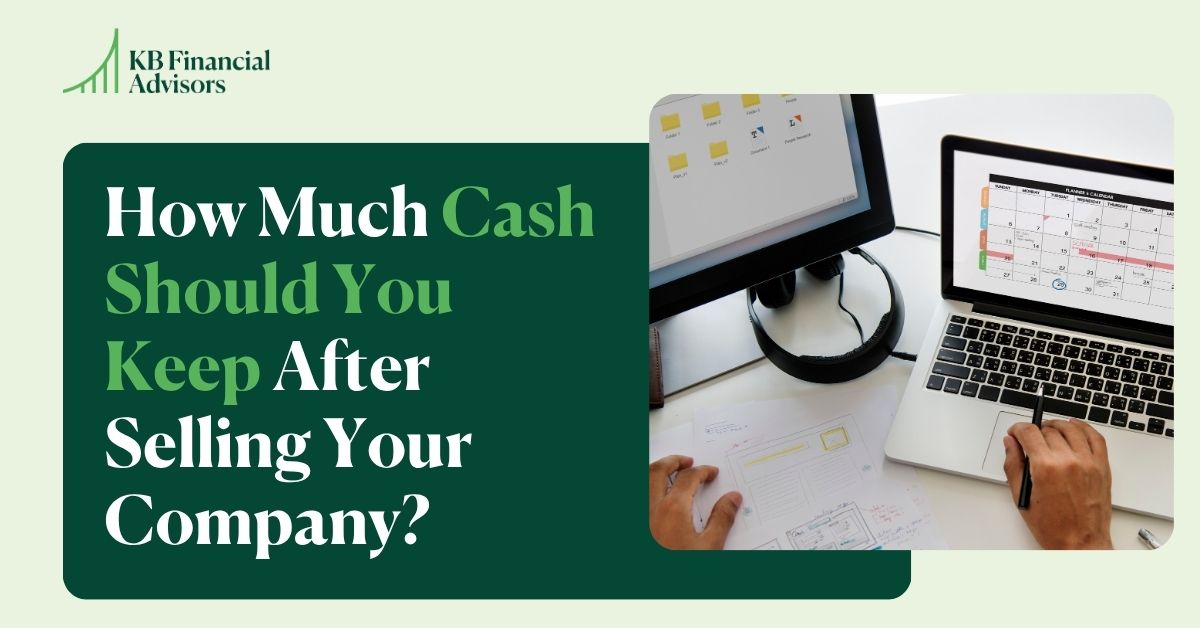Your startup is growing, investors are happy, and your equity is finally worth something. But here’s the reality: most of your net worth is tied up in stock you can’t touch. On paper, you’re wealthy. In practice, your personal finances may still feel fragile.
That’s where liquidity planning for founders comes in. Liquidity is the bridge between paper wealth and accessible wealth. Done right, it gives you the flexibility to diversify, reinvest in new ventures, support your family, or finally take that long-overdue break. Done poorly, it can leave you with a bigger tax bill than you expected, limited choices, or money locked away when you need it most.
Here’s a founder-friendly roadmap for approaching liquidity planning, not as a scramble at the end, but as an intentional process that sets you up for success.
Define Your Goals Upfront
Before you start any planning, take a step back and ask yourself: what will liquidity actually mean for you?
For some founders, it’s about personal financial security, diversifying away from concentrated equity, buying a home, buying a second home or ensuring long-term family stability. For others, it’s about lifestyle and milestones, like making a charitable gift, creating generational wealth, or having the freedom to make life choices without financial pressure.
Liquidity can also serve entrepreneurial goals, such as freeing up capital to start a new venture, invest in other startups, or build a personal investment portfolio. These answers will guide every decision that follows.
Laying The Groundwork For Liquidity Planning
Once you have your goals in mind, the most effective way to turn that into reality is to build a small group of professionals who can help translate your equity into the outcomes you want.
Financial Advisor – The Big-Picture Strategist
A good advisor helps you translate company equity into your personal life goals through effective Liquidity Planning. They’ll model different scenarios (for example, selling 10% of your stock now vs. waiting until a bigger round) and show you how those decisions affect your net worth, tax bill, and risk exposure. They’re also the ones who help you avoid the classic founder mistake of being overexposed to one asset, your company.

Tax Expertise – The Architect Behind the Numbers
Equity transactions can be extremely tax-sensitive. Your Tax Strategist can help you navigate AMT (alternative minimum tax) when exercising options, maximize Qualified Small Business Stock (QSBS) exclusion, and avoid surprises from state tax rules. Essentially, they make sure you keep as much as possible of what you earn, and that you don’t make irreversible mistakes with the IRS.
Attorney – The Contract Translator
Liquidity opportunities are always wrapped in legal agreements, tender offer terms, rights of first refusal, restrictions on selling, and so on. An attorney ensures you actually understand what you’re signing, protects you from clauses that might handcuff you later, and negotiates on your behalf when needed. They also make sure your paperwork (stock grants, 83(b)s, trusts) is squared away so you don’t run into headaches down the road.
Understanding Your Liquidity Options
Liquidity planning doesn’t have to mean giving up control or waiting until IPO day. There are multiple ways to turn illiquid equity into usable cash along the way. The right option depends on your growth stage, investor relationships, and personal goals.
Secondary Sales
This is the most common form of early liquidity for founders. In a secondary sale, you sell a portion of your shares directly to new or existing investors during a funding round.
Why founders like it: You can take some risk off the table while continuing to build the business. A secondary sale also sends a signal to employees that the equity they hold has real value.
What to watch out for: Investors sometimes scrutinize how much you sell. Too much, too early, can raise concerns about your long-term commitment. Make sure you’re aligned with your board and keep the optics in mind.
Recapitalizations
In a recapitalization, a new investor (private equity firm, growth equity, or strategic investor) comes in to buy out some existing shareholders, often including founders, while also putting fresh capital into the business.
Why founders like it: You can achieve partial liquidity without waiting for an IPO or acquisition, and you may also bring in a partner who helps fuel growth.
What to watch out for: Recapitalizations can shift control. A new investor might want board seats, veto rights, or a bigger voice in company strategy. You’ll need to weigh the trade-off between immediate liquidity and long-term influence.
Tender Offers
Tender offers are structured opportunities for employees, executives, and sometimes founders to sell a portion of their shares back to the company or to new investors at a set price. These are common in later-stage startups with large employee option pools.
Why founders like it: Tender offers can boost morale by giving employees a chance to realize some value before an IPO. Founders may also participate and access liquidity themselves.
What to watch out for: Tender offers can be administratively complex and may require compliance with securities laws. They can also set a valuation benchmark for the company, which isn’t always advantageous if growth slows afterward.
Strategic Partial Sales
Sometimes, founders negotiate a one-off sale of part of their stake to a strategic acquirer, without selling the whole company. This is less common, but it can happen if a buyer wants to establish a foothold or relationship early.
Why founders like it: This gives you personal liquidity and may strengthen a relationship that leads to a full acquisition later.
What to watch out for: Partial strategic sales can lock you into exclusivity or limit your options with other buyers down the road.
Debt-Backed Liquidity
For founders with highly valuable but illiquid shares, there’s also the option of borrowing against stock. Lenders or private banks may extend credit secured by your equity position.
Why founders like it: You don’t have to sell shares, so you keep full upside. It can provide a cash buffer before an IPO or acquisition.
What to watch out for: Loans against private stock often come with high interest rates, collateral requirements, and the risk of a margin call if the valuation drops. It’s a strategy that should be used cautiously.
IPO or Acquisition (Traditional Liquidity Event)
The classic liquidity event of selling the company or going public is still the primary path for many founders.
Why founders like it: A clear, definitive exit with full or partial payout.
What to watch out for: Acquisitions often involve earn-outs or retention periods. IPOs come with lockup periods, meaning you may not access liquidity immediately. These structures should be modeled carefully so you know what cash flow really looks like in year one post-exit.
Making The Event Tax-Efficient
Liquidity is one of those rare events where proactive tax planning can save you millions. That’s why we often integrate tax reduction strategies into our financial planning advice for founders right from the get-go.
Check QSBS eligibility: If your founder shares qualify for the Qualified Small Business Stock exclusion, you could exclude up to $10 million in capital gains from federal tax. If they don’t qualify, ask your advisor if a rollover strategy or corporate restructuring is possible.
Run projections early: Before signing any deal, model out your tax bill under different scenarios: cash, stock, earn-outs, escrows. This helps you avoid nasty surprises and ensures you have the liquidity to cover taxes when they come due.
Use charitable and estate planning vehicles: Donor-advised funds let you take a large deduction in the year of the exit, while giving you time to decide where to donate. Trusts and gifting strategies can reduce state taxes or transfer wealth to the next generation more efficiently.
Harvest losses in your portfolio: If you’ve got investments sitting at a loss, the year of your liquidity event is the time to sell them. Those realized losses can offset the gains from your exit.
Life After Liquidity
Once your liquidity event closes, it’s time to turn proceeds into a foundation for long-term financial security.
You can start by diversifying your wealth. Many founders are heavily concentrated in company stock, and spreading your assets helps reduce risk and create flexibility.
Next, align funds with your personal goals, whether it’s buying a home, paying down debt, supporting your family, or giving to charity. Using tools like donor-advised funds, trusts, or retirement accounts can help maximize tax efficiency while preserving wealth.
Finally, think about long-term security and legacy. Liquidity gives you the chance to plan for multi-year financial stability, future opportunities, and your family’s future. Learn more about structuring ownership in startups in our related blog: How to Split Equity Among Co-Founders.
The Takeaway
Liquidity planning isn’t about predicting the future; it’s about creating flexibility. The earlier you start, the more options you’ll have when opportunity comes.
For founders, liquidity is not just a payout; it’s a crucial business decision. It’s the culmination of years of work and the starting point of a whole new financial journey. Approach it with the same intentionality you used to build your company, and you’ll come out of it not just wealthier, but more in control of what comes next.
KB Financial Advisors can help you navigate this journey. From tax-efficient planning to long-term wealth management, our team of CFPs and tax specialists works with founders across the U.S. to turn liquidity into lasting financial security and freedom.
Book a discovery call with us today!




